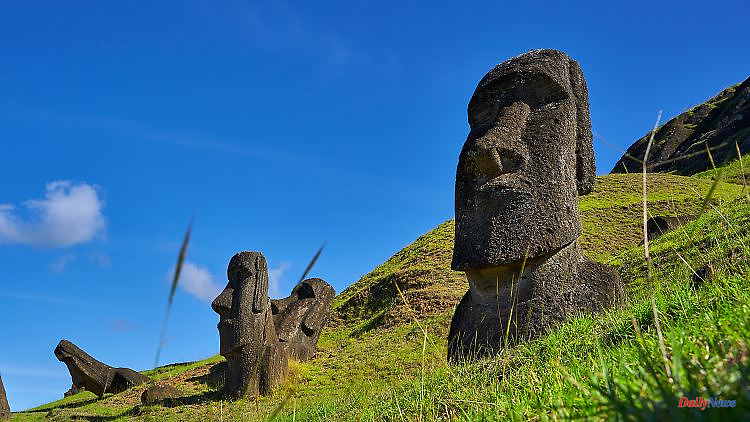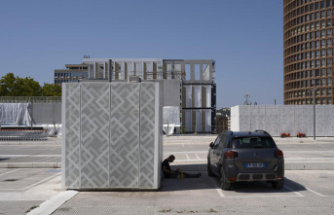Despite extensive research, the Moai figures on Easter Island continue to raise questions. Now scientists are discovering a new stone statue in an extinct volcanic crater.
Easter Island is world famous for its mysterious Moai stone statues - now a new giant stone head has surprisingly been found. The Moai was discovered in a dried-up lagoon in a volcanic crater, according to the indigenous community living on the Pacific island belonging to Chile. She spoke of "a truly unique discovery".
It is the first time that a moai has been discovered in such a place, the indigenous island administration reported. The statue was about 1.60 meters tall and was found looking towards the sky. "The interesting thing is that for at least 200 to 300 years the lagoon was up to three meters deep," said Ninoska Avareipua Huki Cuadros from the island's administration. "So no one could put down the Moai here in that time." There are no plans to remove the statue from the crater.
Easter Island is remote about 3,500 kilometers west of the Chilean coast. It is world famous for its mysterious, huge stone heads. The Moai, with their characteristic elongated head shape, long earlobes and large noses, are estimated to have been built around four centuries ago. The Rapa Nui, the native people of Easter Island, believe that the giants have magical powers.
Despite extensive research, its actual purpose and the exact time of its construction are still disputed. Researchers continue to puzzle over how exactly the natives moved the boulders, some of which weighed up to 80 tons, over the resource-poor island. It is now assumed that the sculptures were held on ropes and rocked from side to side - and thus moved step by step.












